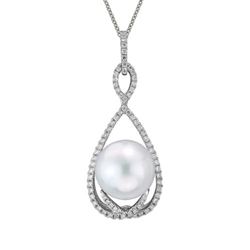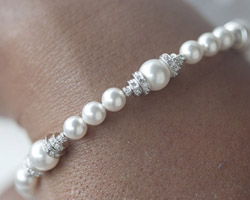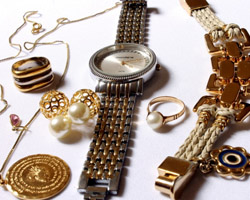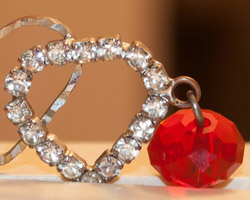Pearl Jewelry – World of Gemstones
Ancient civilizations have loved pearl jewelry for thousands of years. They are one of the most famous and cherished gems of all time. Historically, divers and fishers discovered pearls by chance. Mollusks produce layers of nacre around some type of irritant inside of its shell which creates a pearl. Not surprisingly, royalty considered these “natural pearls” as an extremely important financial assets.
Pearl Jewelry Origins
In 1893 Kokichi Mikimoto successfully cultured a pearl in Japan. Cultured pearls are the result of the deliberate insertion of a bead – or a piece of tissue – that the mollusk coats with nacre.
The most familiar colors for pearls are white and cream, but they can range to include every hue (both naturally and cultured). The quality of the nacre – again for both natural pearls and cultured pearls – can also dictate the quality of the luster, or shine of the pearl, which is very important to both its value and beauty. The surface of the pearl should be free of marks and smooth while the overall shape could be round, pear-shaped, oval, or perhaps misshapen (also known as baroque pearls).
Imitations
 Imitation pearls can be found on the market. Some suggest that you can tell if a pearl type by gently rubbing it against the edge of a tooth. Cultured and natural pearls will feel slightly rough, like fine sandpaper, due to the texture of nacre. However, imitation pearls will feel as smooth as glass. While this may prove true in some situations, the thickness of the nacre is also an important factor. Generally speaking, the thicker the nacre layer, the more expensive the pearl is going to be.
Imitation pearls can be found on the market. Some suggest that you can tell if a pearl type by gently rubbing it against the edge of a tooth. Cultured and natural pearls will feel slightly rough, like fine sandpaper, due to the texture of nacre. However, imitation pearls will feel as smooth as glass. While this may prove true in some situations, the thickness of the nacre is also an important factor. Generally speaking, the thicker the nacre layer, the more expensive the pearl is going to be.
Allow one of our Schwanke-Kasten professionals to help you discover superior, beautiful pearls and also check out our current selection of pearl jewelry on the Schwanke-Kasten website.


